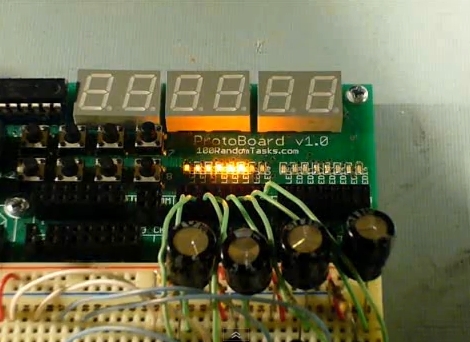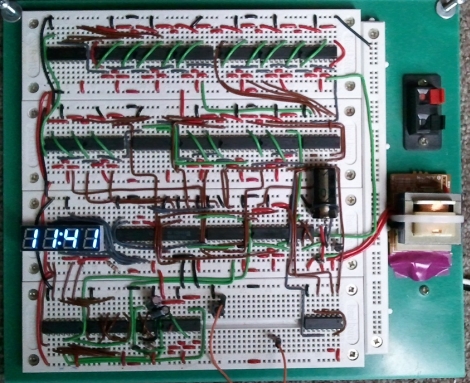
[RandomTask] is sharing a Larson scanner he built a few decades ago. These days you can whip one of these up using an Arduino in under an hour. He mentions this, but we agree that for nostalgic purposes there’s nothing like implementing the scanning LED effect using hardware.
Often called a Cylon Eye (after the television show Battlestar Gallactica) or referred to as the lights on the front of Kitt (the car from Knight Rider), the effect doesn’t just involve switching LEDs on and off in the proper order. A true Larson Scanner fades the LEDs as the bright point moves away from them, resulting in a tail that dims over time.
This implementation uses a 555 timer as the clock signal, allowing for speed control through a potentiometer. A counter chip, J-K flipflop, and line decoder all work with each other to address the movement of the brightest light. The fading effect is managed via a capacitor and resistor for each LED. The video after the break shows the pleasing result of this setup.
Continue reading “Larson Scanner Using 7400 Series Logic Hardware”












